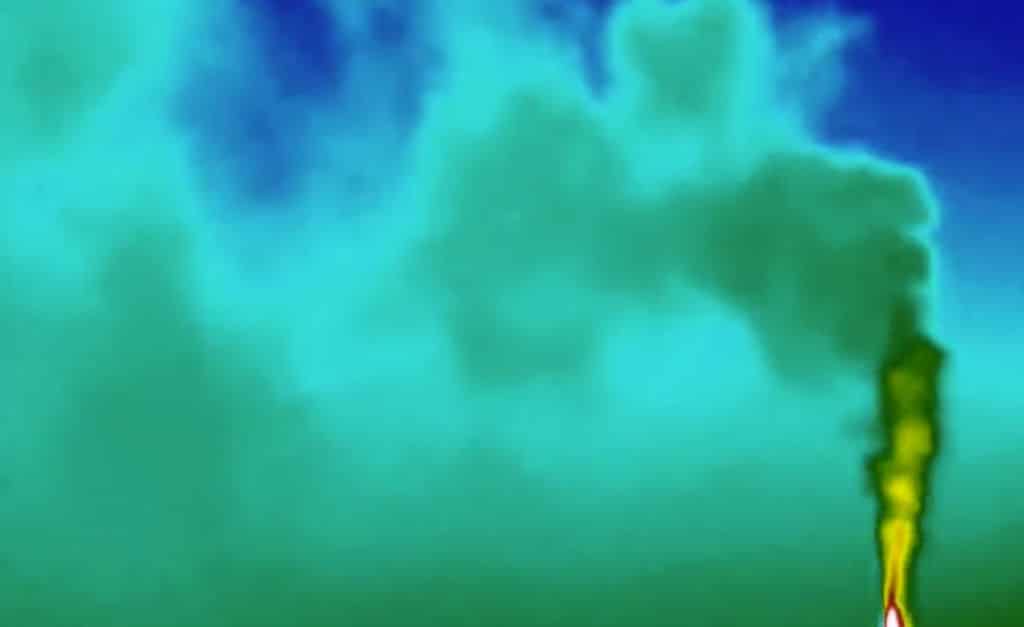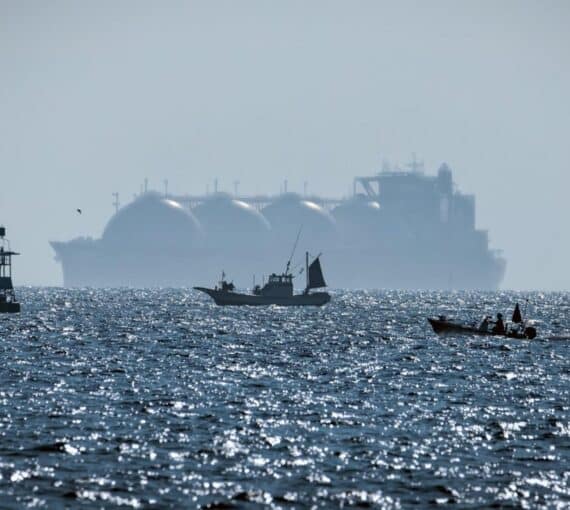
Infrared footage taken at oil and gas sites in Alberta and Saskatchewan reveal that methane is being intentionally and unintentionally emitted.
Reducing oil and gas methane emissions is among the fastest and cheapest ways to slow the rate of warming.
At the close of last month’s UN Climate Conference, Secretary General António Guterres said that the summit had been driven by two central themes: justice for climate-vulnerable countries, and ambition to keep the 1.5 degree warming limit alive.
While world leaders were able to score a significant win for climate justice—creating a historic loss-and-damage fund for the most vulnerable countries—they were less clear on how they would meet the 1.5 degrees Celsius target, a threshold to limit warming above pre-industrial levels.
Methane is responsible for one-quarter of global warming emissions. Reducing oil and gas methane emissions is among the fastest and cheapest ways to slow the rate of warming.
Methane is responsible for one-quarter of global warming emissions. Reducing oil and gas methane emissions is among the fastest and cheapest ways to slow the rate of warming. The federal government is aware of this and has set a target of cutting at least 75 per cent of oil and gas methane pollution by 2030.
Canada is making progress, but with the upcoming federal budget, it’s crunch time for the government to follow through on its commitment to fund a central body dedicated to emission measurement and monitoring—a foundational component of Canada’s methane mitigation plan.
Environment and Climate Change Minister Steven Guilbeault should be lauded for bringing forward a new and ambitious framework for oil and gas methane regulations. The world-leading framework signals the government’s intent to ban harmful venting and flaring, require monthly leak detection at oil and gas sites, and insist on using certain non-emitting equipment in industry operations.
The framework is filled with the ambition that the world lacked at COP27, but ambition is only valuable with political and financial follow-through. And while the government needs to make good on its regulatory promises, improved systems for spotting and measuring emissions throughout the oil and gas supply chain are just as important.
Currently, emissions are calculated through complex models that are based on flawed data rather than measuring actual methane releases. Peer-reviewed studies have consistently shown that these models dramatically underestimate what is being emitted. The absence of accurate emissions data based on real-world measurements makes it difficult for regulators to hold companies accountable for the pollution they create, and presents challenges for decision-makers trying to determine how close we are to achieving government targets. These challenges should be addressed by creating a Global Centre of Excellence for methane measurement and monitoring.
The accountability gap was brought to light last month when regulators and industry alike were surprised to learn that a cloud of methane pollution had formed over the Alberta and Saskatchewan border at Lloydminister.
The accountability gap was brought to light last month when regulators and industry alike were surprised to learn that a cloud of methane pollution had formed over the Alberta and Saskatchewan border at Lloydminister. The cloud, detected by a European satellite, was estimated to have an emissions rate of 11 tons per hour, equal to the annual emissions of 200 cars.
A properly oriented and fully funded Centre of Excellence could help develop better methods of measuring and monitoring emissions, foster collaboration among groups, and give accurate information to governments and regulators. It would also serve as an accelerator for methane-reduction innovation which could be exported globally, shoring-up Canada’s reputation as a world leader in this domain.
The recently passed U.S. Inflation Reduction Act includes $1.5-billion to promote methane measurement and detection. To keep pace with American ambition, Canada should follow suit and put at least a small fraction of that funding towards a Centre of Excellence.
Canada has high levels of climate ambition. To make that ambition a reality, the federal government must pass strong regulations and establish and fully fund a Centre of Excellence dedicated to measuring and monitoring methane emissions.
Jonathan Banks is a global director at Clean Air Task Force; Jan Gorski is a program director at the Pembina Institute; Tom Green is senior climate policy adviser at the David Suzuki Foundation; and Ari Pottens is a senior campaign manager at the Environmental Defense Fund.
This op-ed was originally published in The Hill Times.
Our work
Always grounded in sound evidence, the David Suzuki Foundation empowers people to take action in their communities on the environmental challenges we collectively face.




